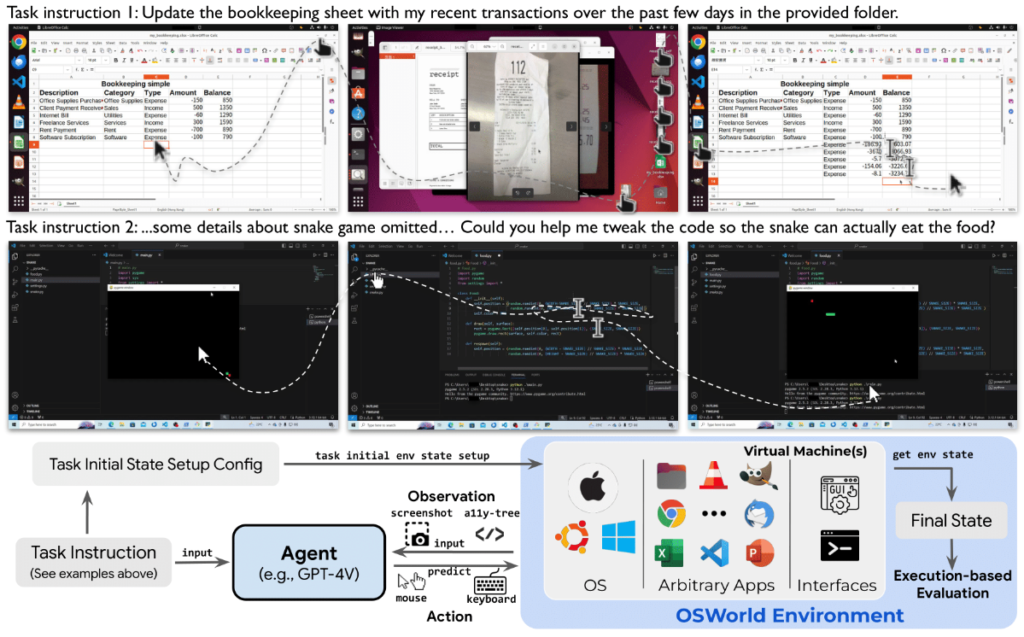Anthropic’s latest AI model, Claude 3.5 Sonnet, introduces groundbreaking computer use capabilities. Unlike other AIs limited to answering questions or providing information, Claude goes further by actively interacting with the digital world. It can browse the web, fill out forms, and even write code—all within a computer interface, just as a human would.
Computer Use: A Game Changer
The standout feature in Claude 3.5 Sonnet is its “computer use” ability. This isn’t about simple command typing or relying on specialized software. Instead, Claude can view a screen, move a cursor, click buttons, and type. It’s like having a digital assistant who can truly use your computer.


How does it work?
Developers can tap into Claude’s power through an API that translates human instructions into precise computer actions. For instance, if you ask Claude to “gather data from this spreadsheet and update information on a website,” the API breaks this down into specific steps. It would open the spreadsheet, copy data, launch a browser, navigate to the website, locate the correct fields, and paste the data.
With these capabilities, Claude 3.5 Sonnet is redefining AI’s role in digital tasks, moving from a passive tool to an active digital assistant.
Real-World Applications: From Automating Tasks to Building Software

Claude 3.5 Sonnet’s capabilities open up vast possibilities. Businesses can use it to automate repetitive tasks like data entry, form filling, and report generation—saving time and reducing errors. Researchers, too, benefit by using Claude to analyze large datasets or manage experiments across multiple software platforms, making complex projects more efficient.
Leading companies such as Asana, Canva, and DoorDash are already testing Claude’s “computer use” feature to simplify their workflows. Replit, an online coding environment, is an especially exciting example. They use Claude to evaluate apps in real-time as developers build them. This setup enables Claude to provide immediate feedback, helping developers identify issues early and refine their work quickly.
With these applications, Claude stands out as a powerful assistant, poised to revolutionize productivity and innovation across various industries.
Putting Claude to the Test: The OSWorld Benchmark

To measure Claude’s computer use abilities, researchers used the OSWorld benchmark—a test designed to assess an AI’s skill in using computers like a human. Claude excelled, especially in the “screenshot-only” category. Here, it navigated interfaces using only still images yet outperformed other AI models. This success shows Claude’s advanced ability to understand and work within complex digital environments, even without dynamic feedback.
These results highlight Claude’s deep comprehension of digital interfaces and its potential to reshape digital interactions in meaningful ways.
Safety First: Addressing the Challenges of Powerful AI

Anthropic recognizes that with greater power comes greater responsibility. While the benefits of computer use are vast, there are risks, such as potential misuse for spreading misinformation or engaging in fraud. To address these concerns, Anthropic is proactively developing safeguards. These include classifiers that detect when and how computer use is being employed, ensuring it’s used safely. They also stress ethical development practices, focusing on using Claude 3.5 Sonnet responsibly and for society’s benefit.
A Glimpse into the Future
Computer use in Claude 3.5 Sonnet is still in the early stages, and Anthropic is transparent about its current limitations. The Model Evaluation is compared to GPT-4o not the new GPTo1-preview which is far superior in reasoning. Claude excel in tasks that are simple for humans, like scrolling or dragging, can still challenge Claude. However, rapid progress is underway. With ongoing research and feedback, we can expect notable improvements soon. This evolution hints at a future where AI seamlessly integrates into our digital lives, enhancing work, creativity, and exploration.

